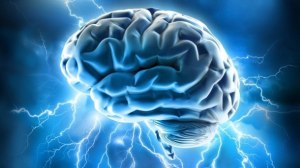No.
I read an article made me want to throw my laptop out the window and sail away to live on a deserted island for the rest of my days.
Academic science isn’t sexist: http://www.nytimes.com/2014/11/02/opinion/sunday/academic-science-isnt-sexist.html
This article is arguing that academic science is no longer sexist, and that most reports of sexism and the gender gap in academia stem from old data (well, the two articles I reference below are from 2014 and 2012, respectively). This just isn’t true. What I find even more disturbing is this bit:
“According to our research, the biggest culprits are rooted in women’s earlier educational choices, and in women’s occupational and lifestyle preferences.”………. “As children, girls tend to show more interest in living things (such as people and animals), while boys tend to prefer playing with machines and building things.”
So, they’re proposing that women are just choosing not to enter these fields, ignoring the glaring social constructs and implicit biases discouraging women from entering these fields. There are so many factors that influence whether or not a woman pursues a career in a STEM field (science, technology, engineering and math), this article takes an over simplistic view by proposing that women, in essence, just aren’t as interested in math and science.
However, their paper does contain a lot of information about women in higher academia and their positions in various fields. One major issue with the analyses in this paper is the focus on women only; there is a lack of any direct comparison to males. Every single one of the graphs depicted in the paper are showing the increase in percentage of women doing or getting “x” as a function of time (jobs in STEM fields, grants, tenure positions, etc.). We can infer the level of males from these graphs (i.e. if women make up 20% of doctoral students in math, males must be 80%), but if the goal is to prove there is no sexism in academic science, and therefore that men and women are equal, including both gender in the analyses and graphs would be crucial. The authors also don’t address the fact that the majority of their graphs (plotting percentage of women in different STEM fields) lie below 50% = the point at which males and females would have equal enrollment, employment, and funding.
One graph illustrates the percentage of PhD’s awarded to women in a variety of fields from 1970 to 2010. Notably, Psychology is the only field listed where women earn over 50% of PhDs. The social sciences and life sciences seem to reach to 50% mark around 2010, but the percentage of women earning PhD in fields of Geoscience, Economics, Engineering, Math and Computer Science and the Physical Sciences are anywhere from 20% to 40% in 2010 (up from their starting percentages of 0-10% in 1970).
As we move into higher levels of academia, the difference between men and women becomes even more pronounced. Among all the same fields listed above, when examining the percentage of females in tenture-track faculty positions, only Psychology is 50% female in 2010. Engineering barely reaches 10% women in tenure-track faculty positions by 2010. All of this information coming from the very same paper stating that there is no sexism in academic science.
I also did my own investigation. Using the NSF Survey of Earned Doctorates (SED), I looked at how many men and women earned their doctorate in a variety of disciplines in 2012.

A couple points of interest:
Number of doctorate degrees in Engineering: Men = 6,527, Women = 1,883 (22%)
Number of doctorate degrees in Math and Computer Science: Men = 2,683, Women = 861 (24%)
Number of doctorate degrees in Psychology: Men = 1,047, Women = 2,566 (71%)
Overall, men earned more doctorates in Engineering, Physical Sciences, Geosciences, Math and Computer Science, Social Sciences, and Architecture & Environmental Design. Women earned more doctorate degrees in Life Sciences, Psychology, Humanities and Arts & Music. In those cases where women earn more degrees in a given field than men, the gap is much smaller on average than those fields where men earn more degrees. This seems to still be a far cry from equality.
The authors of the original article further qualify their position:
“That’s not to say that mistreatment doesn’t still occur — but when it does, it is largely anecdotal, or else overgeneralized from small studies. As we found, when the evidence of mistreatment goes beyond the anecdotal, it is limited to a small number of comparisons of men and women involving a single academic rank in a given field on a specific outcome.”
This is also not true. The article linked below, “Sex and race discrimination in academia starts even before grad school”, includes a sample of 6,548 professors in various disciplines, including STEM fields, at 259 public and private universities. The authors sent emails to professors, asking for an informal meeting to discuss future academic and educational opportunities. All that was altered between emails (the dependent variable) was the name of the “student” sending it. Names varied by gender and ethnicity; a stereotypical white male name was “Steven Smith” and a black female name was “Latoya Brown”. Response rates for women and non-white ethnicities was statistically lower for every field relative to white males (the exception being fine arts). Science, technology and business fields all showed large disparities between response rates for white males and every other group. Business showed the greatest disparity, with 87% of white males receiving a response compared to just 62% of female and minority students. This demonstrates that even before students enter graduate school, there is some implicit bias or predisposition for professors and academics to prefer to interact with and respond to men over women.
The problem isn’t just male professors either. The second article I reference below, “Science faulty’s subtle gender biases favor male”, demonstrates that both male and female professors show an implicit bias against female applicants, rating them as less competent than an identical male applicant. Again, some applications had a female name and others had a male name, although the content of the application was identical. Those applications will a male name were also offered a higher starting salary on average.
Taken together, these studies show that this implicit bias against female students isn’t restricted to one area of study or major and it reaches across professors and academics of all genders and races. This suggests that there is in fact some cultural bias against women in science and technology that is so pervasive it even effects tenure-track female professors, who have presumably suffered through years of the same biases themselves. It isn’t simply the case that women are “choosing” not to enter into STEM fields; there is a wider cultural bias in place affecting every aspect of a woman’s career choice.
I felt the need to write this article (which is slightly outside my intended focus of science news reporting) because of what seems to be a recent flux of articles either proving or disproving the gender gap in academia. I was also prompted by my own experiences as a female researcher in typically male-dominated STEM fields. It’s important that this issue be addressed; that we come together as a community to find ways to lessen (hopefully abolish) these implicit biases still present in our society so that the best and brightest can excel, regardless of gender or race.
Although there are dozens of articles illustrating the gender gap in academia, these two articles are particularly well done:
Sex and race discrimination in academia starts even before grad school: http://www.scientificamerican.com/article/sex-and-race-discrimination-in-academia-starts-even-before-grad-school/
Science faulty’s subtle gender biases favor male students: http://www.pnas.org/content/109/41/16474.abstract



